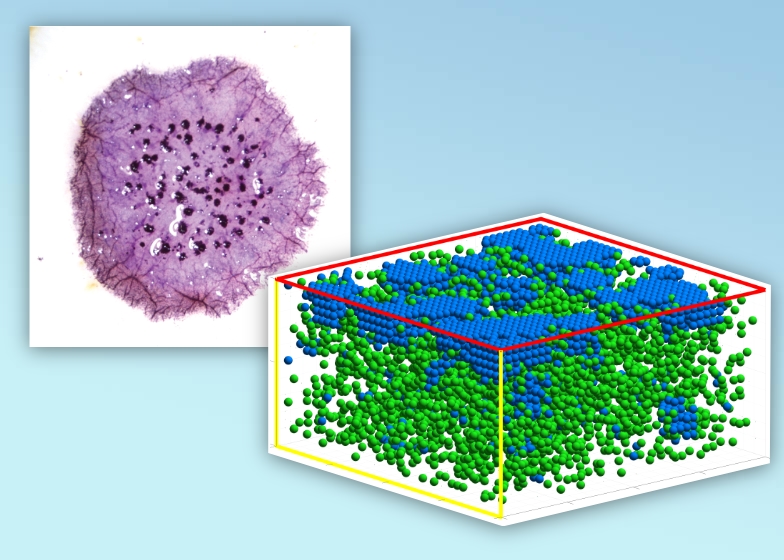Three-dimensional experiments and individual based simulations show that cell proliferation drives melanoma nest formation in human skin tissue
P Haridas, AP Browning, J McGovern, DLS McElwain, MJ Simpson
BMC Systems Biology (2018)
P Haridas, AP Browning, J McGovern, DLS McElwain, MJ Simpson
BMC Systems Biology (2018)
Background
Melanoma can be diagnosed by identifying nests of cells on the skin surface. Understanding the processes that drive nest formation is important as these processes could be potential targets for new cancer drugs. Cell proliferation and cell migration are two potential mechanisms that could conceivably drive melanoma nest formation. However, it is unclear which one of these two putative mechanisms plays a dominant role in driving nest formation.
Results
We use a suite of three-dimensional (3D) experiments in human skin tissue and a parallel series of 3D individual-based simulations to explore whether cell migration or cell proliferation plays a dominant role in nest formation. In the experiments we measure nest formation in populations of irradiated (non-proliferative) and non-irradiated (proliferative) melanoma cells, cultured together with primary keratinocyte and fibroblast cells on a 3D experimental human skin model. Results show that nest size depends on initial cell number and is driven primarily by cell proliferation rather than cell migration.
Conclusions
Nest size depends on cell number, and is driven primarily by cell proliferation rather than cell migration. All experimental results are consistent with simulation data from a 3D individual based model (IBM) of cell migration and cell proliferation.
